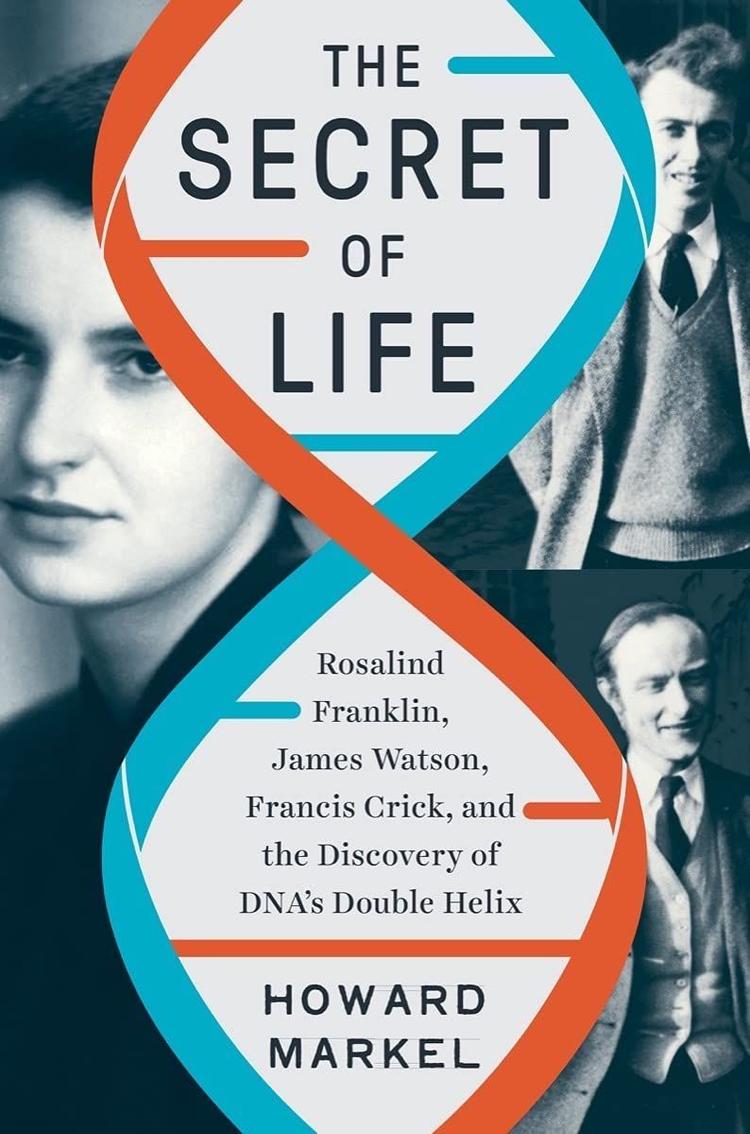The heart of Markel’s book, the conspiracy theory, is built on sand. Much of his case is made by speculation, insinuation, and innuendo, which is often larded with trivial detail to make it seem robust. In The Double Helix, Watson writes, “Maurice and I walked down the Strand and across to Choy’s Restaurant in Soho.” His description of the dinner is impressionistic and focused on science. No other record of the event exists. From this passage, Markel finds active collusion and a large menu: “Over platters of chop suey, curry chicken, chips, and fried rice, all lubricated with black tea and cheap red wine, Watson and Wilkins engaged in the old-school bonding of men as they conspired to exclude Rosalind Franklin from the DNA hunt.” With the writing of a letter that was irregular but hardly damning, Markel writes, Max Perutz “formally” joined “the conspiracy against Rosalind Franklin,” as though a contract were signed in blood.
The most notorious moment in all accounts of the double helix occurs in early 1953, when Wilkins shows Watson the famous Photograph 51, an X-ray image of DNA’s “B” form, taken by Franklin and the graduate student Raymond Gosling the previous spring and given by him to Wilkins. It was the clearest, sharpest image of B DNA yet taken; Watson claims that when he saw it, his “mouth fell open” with sudden recognition. Wilkins showed the photo to Watson unbidden. Markel reanimates the long-settled debate over whether Watson “stole” the photograph, relying not on new evidence but rather on haughty, misguided rhetorical questions. “Why would Franklin authorize her graduate student to freely hand over so critical a discovery to the individual at King’s College she most despised?,” he writes. “Why did she not hand-deliver it to [the head of the institute] John Randall?” First, as even Markel admits, Gosling’s behavior was standard procedure. It didn’t require “authorization.” Gosling thought it was okay to give the photo to Wilkins; Wilkins thought it was okay to show the photo to Watson. Second, Franklin evidently didn’t see the image as “critical.” It had lain in a drawer for eight months while she worked on the “A” form, whose X-ray diffractions were easier to measure but harder to interpret. Third, what Wilkins handed over wasn’t a discovery. It was data. Dozens of similar photographs lay around the lab; 51 was a particularly good example. Finally, Wilkins was assistant director of the Biophysics Unit, was Gosling’s and, technically if not in practice, Franklin’s supervisor, and was working on B DNA. Randall ran an empire of several lab groups and wouldn’t have known B-DNA from Z-DNA. To hand the picture to him would have been bizarre.
Historical consensus, which is by no means overly sympathetic toward Watson, is that Watson was ruthless but not fraudulent in his hunt for the structure. No historian has suggested foul play by any other member of either the Cavendish or King’s laboratories. What Markel has discovered, then, is just plain old English-country-garden-variety sexism, the old chaps’ network grinding away, and Watson’s adroit use of it to get what he wanted. Systemic sexism is the far more serious problem at play in the double helix story. To call it a conspiracy is simplistic, sensational, and ultimately obscurantist.
